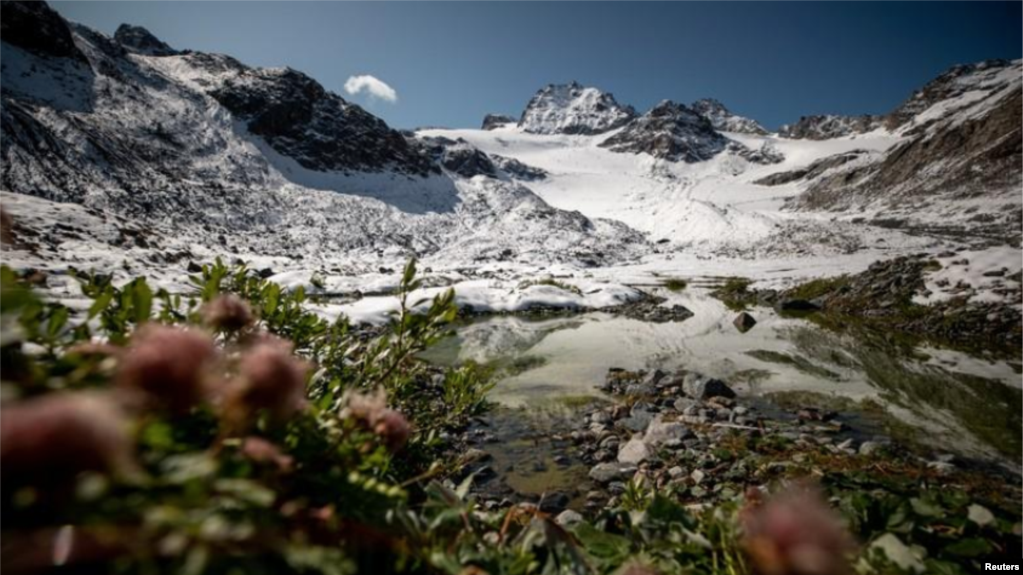
In this file photo, plants grow near a lake in front of Jamtalferner glacier near Galtuer, Austria, on September 11, 2019. (REUTERS/Lisi Niesner)
In Austria, researchers are drilling into mountain glaciers in the Alps in search of data about the Earth’s climate thousands of years ago.
Glaciers are huge areas of ancient ice on mountains or in very cold places that scientists say capture atmospheric conditions from the past.
But the researchers now warn they must work quickly to collect as much information as possible before some melting glaciers disappear.
One scientist involved in the work, Andrea Fischer, told Reuters news agency that glaciers on the eastern edge of the Alps Mountains are especially sensitive to climate change. She said the glaciers have been shrinking, making the examination process urgent.
“We are now roughly at 1920. The rest has already been lost - everything from 1920 until now,” said Fischer, who heads the Institute for Interdisciplinary Mountain Research in Innsbruck. Her work is centered at the top of the Weisseespitze, at a height of more than 3,500 meters.
“In the next two years we will lose another 70 years (of ice and data),” Fischer added, describing the ice at the top of the glacier.
The research team has drilled to the bottom of the glacier to collect ice samples. They want to use the samples to learn more about local climate conditions in the past. Fischer believes the ice could be 3,000 to 5,000 years old. Her samples are going through laboratory tests to date them.
The lower layers are more dense than those at the top. That means one meter of ice in a sample could include thousands of years of data.
“The ice is only a few meters thick. In a few years, this summit will be completely ice-free,” Fischer said.
Scientists are able to gather some climate information from other materials, such as tree trunks, for example. Fischer said this information can be helpful in learning about air temperatures from the past. But studying glaciers is the best way to get data on rain and snowfall, she added.
Shrinking mountain glaciers across the world are one of the issues being discussed at a United Nations climate change conference starting Monday in New York.
Leaders from government, business and civil society are gathering for the Climate Action Summit. It is being led by U.N. Secretary-General António Guterres. In a statement before the conference, Guterres said U.N. scientists have predicted that any temperature rise above 1.5 degrees Celsius “will lead to major and irreversible damage to the ecosystems that support us.”
The U.N. chief warned that if the world’s climate stays on its current path, the world’s temperature could rise by at least 3 degrees Celsius by the end of the next century.
“The climate emergency is a race we are losing, but it is a race we can win,” Guterres said. He added that the conference is meant to go beyond just discussion. “We have had enough talk. This is not a climate negotiation summit. You don’t negotiate with nature. This is a climate action summit,” he said.
I’m Bryan Lynn.
Reuters reported on this story. Bryan Lynn adapted the report for VOA Learning English, with additional information from The Associated Press and United Nations. Mario Ritter Jr. was the editor.
We want to hear from you. Write to us in the Comments section, and visit our Facebook page.
_____________________________________________________________
Words in This Story
drill – v. make holes in hard materials with a machine
sample – n. small amount of something
summit – n. the top of a mountain
irreversible – adj. something that cannot be changed back to the way it was before
Comprehension Quiz
What is the best way to get data on rain and snowfall?